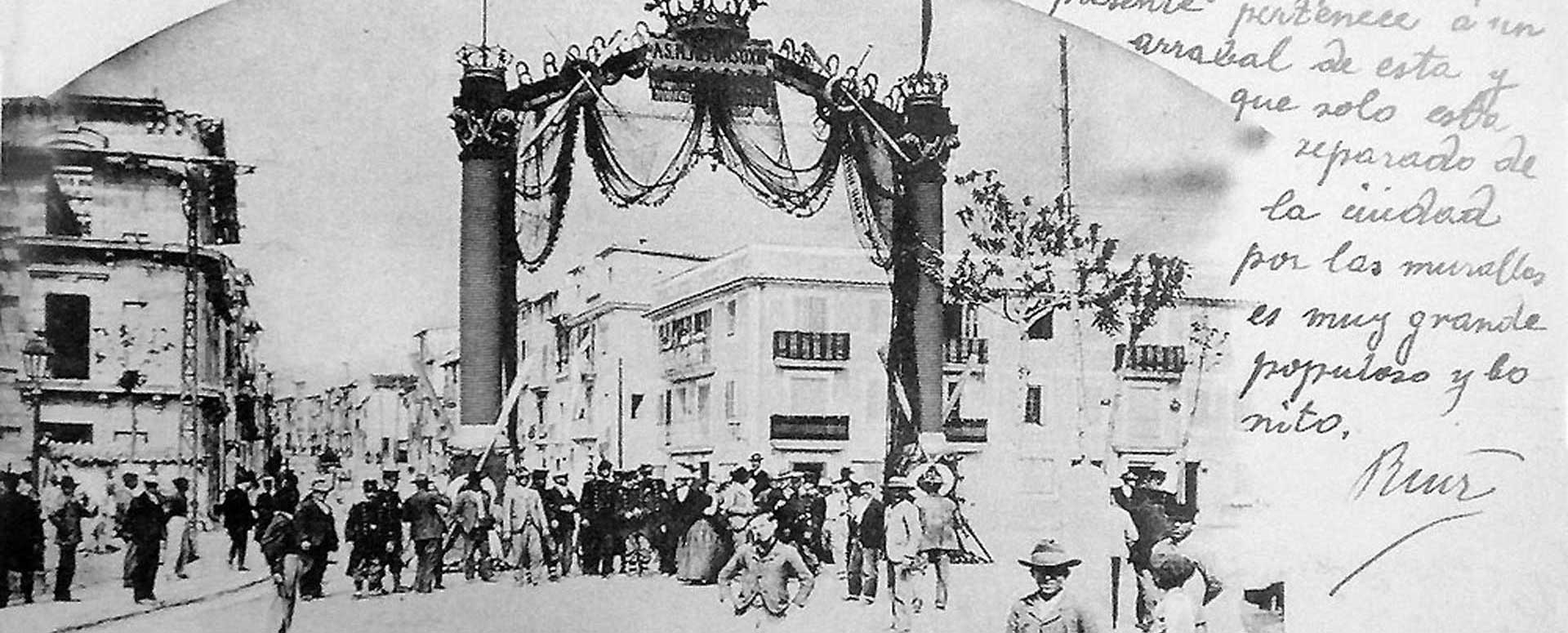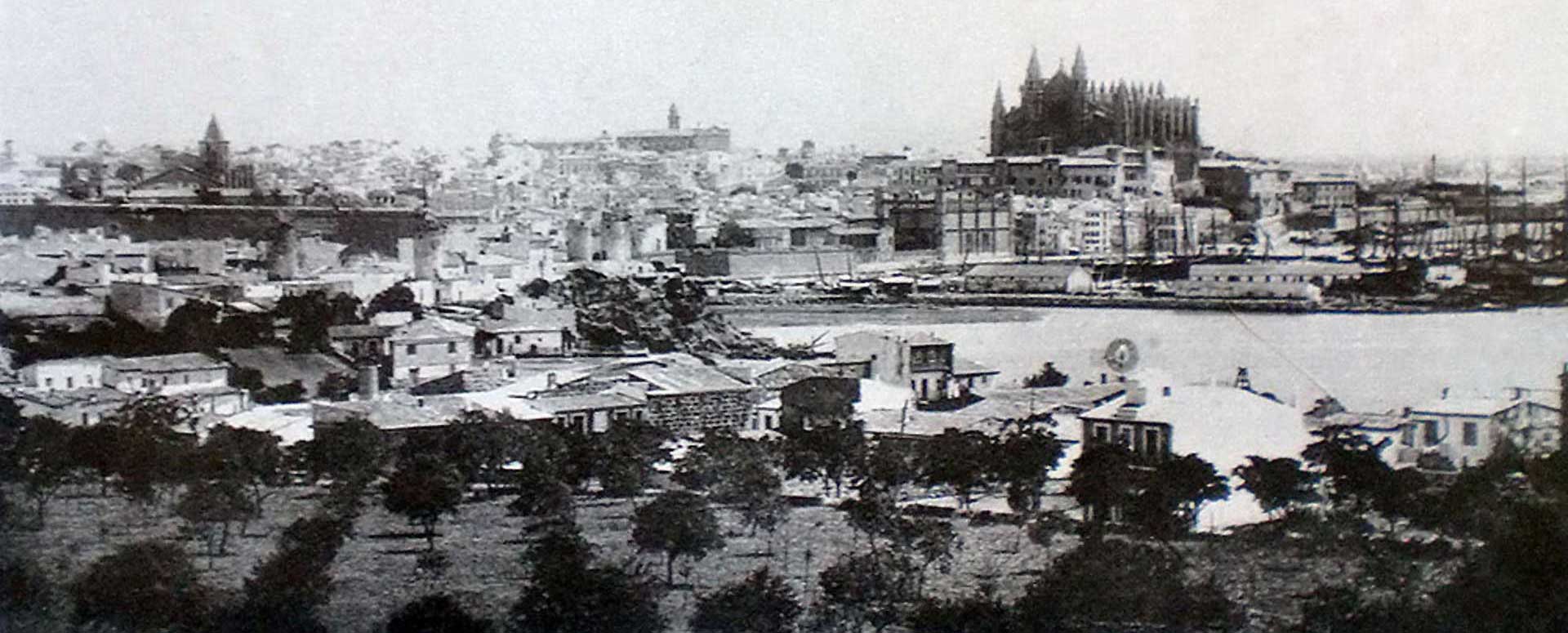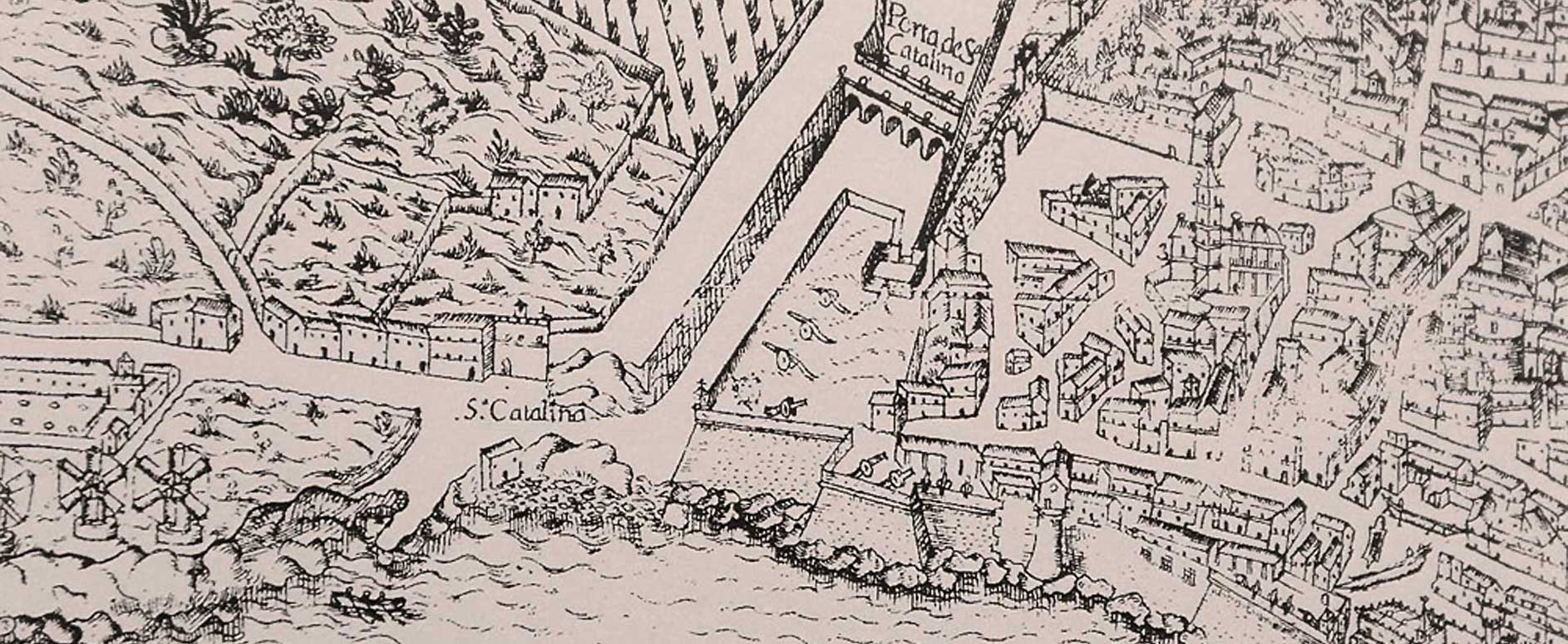The Santa Catalina neighborhood
The Santa Catalina neighborhood
The name Santa Catalina derives from a promise made by the wealthy Mallorcan merchant, Ramón Salelles, to Sta Catalina of Alexandria, patron saint of merchants and sailors whose stone statue in La Lonja depicts a lady leaning against a wheel and pointing west in the direction of the fishermen’s quarter of Puig de San Pere. Fearing for his life at sea, he promised to build a hospital for all the old sailors and merchants which would bear the name of the saint if he survived… Thus in 1343 he founded the Hospital of Santa Catalina next to the Porto Pí highway, occupying the block today between Cerdà, San Majín, Servet, and part of Sa Feixina park. When the latter was dug up at the beginning of the 20th Century, remains of the old hospital were found and that is how the growing arrabal or suburb of Palma took the name it bears today.
Es Jonquet, a small neighborhood within Santa Catalina and made up of a much humbler population, was christened so because of a rafal or water deposit to the left of the Torrent San Magín. It was known as such as far back as the 8th Century because of the abundant reeds growing there as a result of the humid land.
This area, which continued to expand along the Porto Pi road, belonged to the pairatge or feudal barony of the Bishop of Barcelona, resulting from the Christian conquest of Mallorca and subsequent distribution of land so that Santa Catalina and Es Jonquet belonged to the same administrative body as Andratx, Calvià, Puigpunyent, Esporles, Banyalbufar, part of Marratxí, El Pla de Catí (Sant Jordi) and the parrish of Sta Creu, all of which remained under his jurisdiction until this feudal tenure was abolished by the Courts of Cádiz on 6 August 1811.
Santa Catalina developed with its back to Palma, facing the lands of the west, with Andratx as its capital. This can be seen in the surname of its inhabitants, many of andritxol origin. Many of the fishing boats were shared by the two communities and some of the fishermen from Santa Catalina belonged to the Fishermen’s Association of Andratx until 1721, when they founded their own brotherhood. In addition, much of the fish sold at the Santa Catalina market came from the Port of Andratx and when the andritxols set sail for Cuba, the cataliners took over their fishing routes. So the first inhabitants of Santa Catalina were fishermen and traders who settled along the Porto Pi highway, whether to avoid city taxes or to have a place to escape to out of town. Next to settle were hermits from Tarragona and thus the area began to slowly grow its population.
In the 16th Century, immigrant workers arrived to rebuild the walls of the city of Palma and in the 18th Century the mills of Es Jonquet and Calle Indústria were built and which can still be seen today. But military restrictions forbidding any building along the coast or near the city walls meant that little urban development took place until the 1860´s when the inhabitants of Santa Catalina, some 2,462 at the time, proposed enlarging their neighborhood to the Municipality of Palma. So by 1875 there were 6,000 inhabitants, which also meant a breeding ground for diseases of the time, with outbreaks of typhus, smallpox or diphtheria.
In addition to the demographic issue, there was no available land for factories within Palma so the suburb of Santa Catalina, being so close by, became the perfect place to build them. This was another factor that contributed to sanitary problems in the area, besides the administrative ones.
It was not until 1902, when General Weyler sent a telegramme to Palma on 8th February authorizing the demolition, by royal decree, of the city walls that urban development really prospered by eliminating the physical barrier between Santa Catalina and Palma. The last of these barriers – the Santa Catalina Gate – was demolished in 1914.
There were still many factory workers at the beginning of the 20th century despite the neighborhood maintaining its seafaring and fisherman’s character. This, together with the fact that it had grown with its back turned to Palma, meant that Santa Catalina and Es Jonquet have been able to develop their own personality, with their sights set on things as far away as Cuba, New York or Sydney – producing this mixture of being poor yet cosmopolitan. It was a community that, despite being a village, did not live shut off to the rest of the world.
From 1990 onwards, Santa Catalina and Es Jonquet started to look and feel the way they do today, with growth in business and tourism. The area now suffers from a certain gentrification which, like everywhere else, has the effect of ousting the original inhabitants from the neighborhood. And it is precisely the local inhabitants of Santa Catalina as well as the buildings and their history that make it what it is…
Back to Market history






